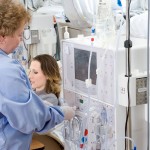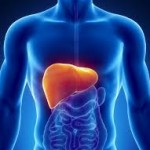Malnutrition is a serious senior health issue. Know the warning signs and how to help an older loved one avoid poor nutrition.
Good nutrition is critical to senior health — yet many older adults are at risk of inadequate nutrition. Know the causes and signs of nutrition problems in older adults, as well as steps you can take to ensure a nutrient-rich diet for an older loved one.
Problems caused by malnutrition
Malnutrition in older adults can lead to various health problems, including:
- Fatigue
- Depression
- Weak immune system, which increases the risk of infections
- Low red blood cell count (anemia)
- Muscle weakness, which can lead to falls and fractures
- Digestive, lung and heart problems
- Poor skin integrity
Good nutrition is especially important for older adults who are seriously ill and those who have dementia or have lost weight. These older adults are more likely to be admitted to a hospital or long term care facility and are vulnerable to post-surgical complications and other problems linked to poor nutrition.
How malnutrition begins
The causes of malnutrition may seem straightforward: too little food, a diet lacking in nutrients, digestion problems related to getting older. But malnutrition is often caused by a combination of physical, social and psychological issues. For example:
- Health problems. Older adults often have health problems that can lead to decreased appetite or trouble eating, such as chronic illness, use of certain medications, trouble chewing due to dental issues, problems swallowing or difficulty absorbing nutrients. A recent hospitalization may be accompanied by loss of appetite or other nutrition problems. In other cases, a diminished sense of taste and smell decreases appetite.
- Limited income and reduced social contact. Some older adults may have trouble affording groceries, especially if they’re taking expensive medications. Those who eat alone may not enjoy meals, causing them to lose interest in cooking and eating.
- Depression. Grief, loneliness, failing health, lack of mobility and other factors may contribute to depression — causing loss of appetite among older adults.
- Alcoholism. Alcoholism is a leading contributor to malnutrition — decreasing appetite and vital nutrients and frequently serving as a substitute for meals.
- Restricted diets. Older adults often have dietary restrictions, including limits on salt, fat, protein and sugar. Although such diets can help manage many medical conditions, they can also be bland and unappealing.
How to spot malnutrition
The signs of malnutrition in older adults may be hard to spot, especially in people who don’t seem at risk. To uncover problems before they become more serious:
- Observe your loved one’s eating habits. Spend time with an older loved one during meals at home, not just on special occasions. If your loved one lives alone, find out who buys his or her food. If your loved one is in a hospital or long term care facility, visit during mealtimes.
- Look for physical problems. Red flags for malnutrition might include poor wound healing, easy bruising, dental difficulties and weight loss. Watch for signs of weight loss, such as changes in how clothing fits.
- Know your loved one’s medications. Many drugs affect appetite, digestion and nutrient absorption.
What you can do about malnutrition
Even small dietary changes can make a big difference in an older person’s health and well-being. For example:
- Encourage your loved one to eat foods packed with nutrients. Spread peanut or other nut butters on toast and crackers, fresh fruits and raw vegetables. Sprinkle finely chopped nuts or wheat germ on yogurt, fruit and cereal. Add extra egg whites to scrambled eggs and omelets. Add cheese to sandwiches, vegetables, soups, rice and noodles.
- Restore life to bland food. Make a restricted diet more appealing by using lemon juice, herbs and spices. If loss of taste and smell is a problem, experiment with seasonings and recipes. A dietitian also can help.
- Plan between-meal snacks. This can be helpful for older adults who get full quickly. A piece of fruit or cheese, a spoonful of peanut butter and even a milkshake can provide nutrients and calories.
- Make meals social events. Drop by during mealtime or invite your loved one to your home for occasional meals. Encourage your loved one to join programs where he or she can eat with others.
- Encourage regular physical activity. Daily exercise — even if it’s light — can stimulate appetite and strengthen bones and muscles.
- Provide food savings tips. If your loved one shops for groceries, encourage him or her to take a shopping list to the grocery store, check store fliers for sales and choose less expensive generic brands. Suggest splitting the cost of bulk goods or meals with a friend or neighbor, or frequenting restaurants that offer senior discounts.
- Engage doctors. Talk to your loved one’s doctors about changing medications that affect appetite or the need for a restricted diet. Request screenings for nutrition problems during routine office visits. Ask about nutritional supplements, including drinks and pudding. Inform doctors if you notice weight loss or suspect depression. Consult a dentist about oral pain or chewing problems.
- Consider outside help. If necessary, hire a home health aide to shop for groceries or prepare meals. Also consider Meals On Wheels and other community services, including home visits from registered dietitians.
Remember, identifying and treating nutrition problems early can promote good health, independence and increased longevity. Take steps now to ensure your loved one’s nutrition.
 The diet to follow when you have chronic renal failure or insufficiency is typically low in sodium, low in protein, and sometimes low in potassium and phosphorus. If the
The diet to follow when you have chronic renal failure or insufficiency is typically low in sodium, low in protein, and sometimes low in potassium and phosphorus. If the  kidney failure progresses and you need dialysis then you usually will be instructed to limit fluid and eat a high protein diet. See a Registered Dietitian that specializes in kidney disease for more specific information and meal planning.
kidney failure progresses and you need dialysis then you usually will be instructed to limit fluid and eat a high protein diet. See a Registered Dietitian that specializes in kidney disease for more specific information and meal planning.





